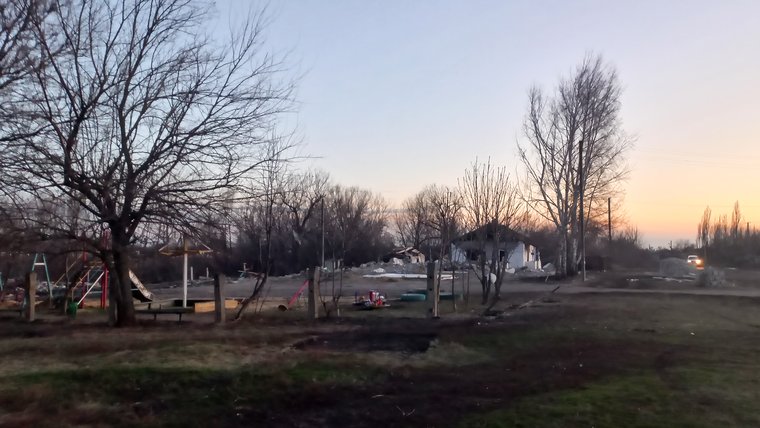
How Ukrainian women are bearing the brunt of frontline life
With men either called up or hiding from the draft, women are left to juggle work and care under threat of shelling


Over a year has passed since Ukraine took back a large part of its eastern Kharkiv region.
But while the first steps of recovery have been made, today communities in the area face new realities alongside Russian shelling: villages and cities in the middle of reconstruction, closed public institutions, a lack of jobs, and increasing numbers of women over men.
“Talking to women, we understood that they are with their children 24/7: kindergartens are closed, schools are closed, many have also lost their jobs,” says Inna Avramenko, a founder of the organisation Greenland, which supports women in Kharkiv and the region. “They are trapped: they have to teach the kids, to raise them, to clean their house; there is nowhere [for them] to go except the playground.”
openDemocracy spoke with the heads and local residents of the Dvorichna, Shevchenkove and Savyntsi communities, which stretch from the north-east to the south-west of the Kharkiv region.
Communities furthest from the front line, such as those in Savyntsi, have managed to restore their infrastructure and are already starting to think about transformation and attracting investments. But for communities closest to the front line, like those in Dvorichna, life is still about counting the losses and victims, evacuation, and maintaining minimum provisions for people who remain in their homes under shelling.
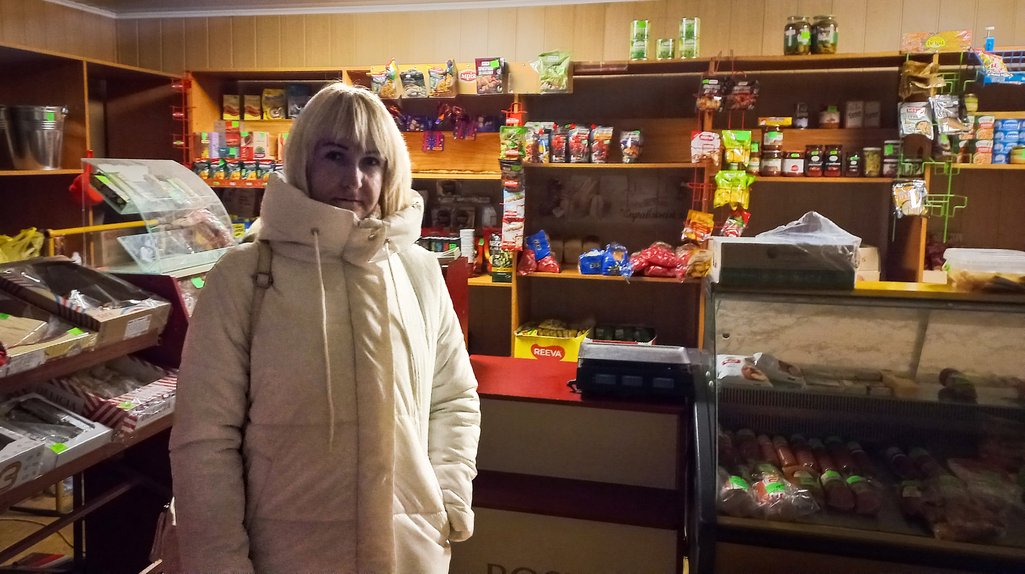
Additional burdens are making women's lives more difficult
Kateryna Farbar
Women’s burdens
The state of the towns and villages in Kharkiv also varies depending on whether communities have been under Russian occupation, as well as their proximity to the front line both today and in the past.
The zone surrounding the city of Kupyansk, an important strategic hub in the east of the Kharkiv region, is one of the most dangerous areas of the front.
The Shevchenkove hromada (a Ukrainian local government division), led by Serhiy Starikov, was liberated from occupation on 10 September 2022. The front line is 50 kilometres away, and Shevchenkove often comes under fire as a result.
Starikov says the main tasks facing Shevchenkove are restorating housing and critical infrastructure, building bomb shelters for educational institutions, and providing humanitarian aid to residents.
Shevchenkove itself was heavily damaged by Russian shelling in the year after it was freed by the Ukrainian army. To date, only three schools out of 11 in the community are intact.
The number of jobs in the region has significantly decreased. Large enterprises have closed down due to the war, taken capital abroad or moved to safer regions of Ukraine. Over the years since the region was freed, many displaced persons and refugees have returned to their often destroyed homes. With a large number of men mobilised, the increased visibility of women in public life and workplaces is palpable.
Before the war, the population in Shevchenkove was 12,500. Today, the number of people who receive humanitarian aid in the town, including displaced persons, is 12,000, of which almost 6,000 are women, 4,000 are men and 1,700 are children. More than 5,000 people are elderly. Starikov says 250 men have been mobilised from the community.
Indeed, men are difficult to count because many of them do not apply for humanitarian aid for fear of being mobilised. “Some men are hiding,” says Starikov.
To avoid the call up, these men avoid taking jobs so their names do not enter official state registers. This means women and their partners often end up at home together. Some face domestic violence, while many care for children who are only attending online classes. These additional burdens make women’s lives more difficult.
‘Everything is destroyed’
Amid shelling and a hard burden of care, women’s psychological state suffers. Women are looking for ways to spend time outside the home but, in frontline territory, these opportunities are limited.
Public organisations that provide free psychological counselling or group classes such as art or vocal therapy are useful in this regard.
One of these Kharkiv organisations, Greenland, which was created in June this year, has become a place where women from the area find recovery and psychological and legal support.
“When I come here, I come back to life,” says Victoria, 53, who attends singing therapy at Greenland.
Originally from Volnovakha, near Mariupol, Victoria moved to Kharkiv from Crimea three years ago. She suffers stress due to the war and constant shelling, and is still grieving over the death of her parents in Russian-occupied Volnovakha in March 2022.
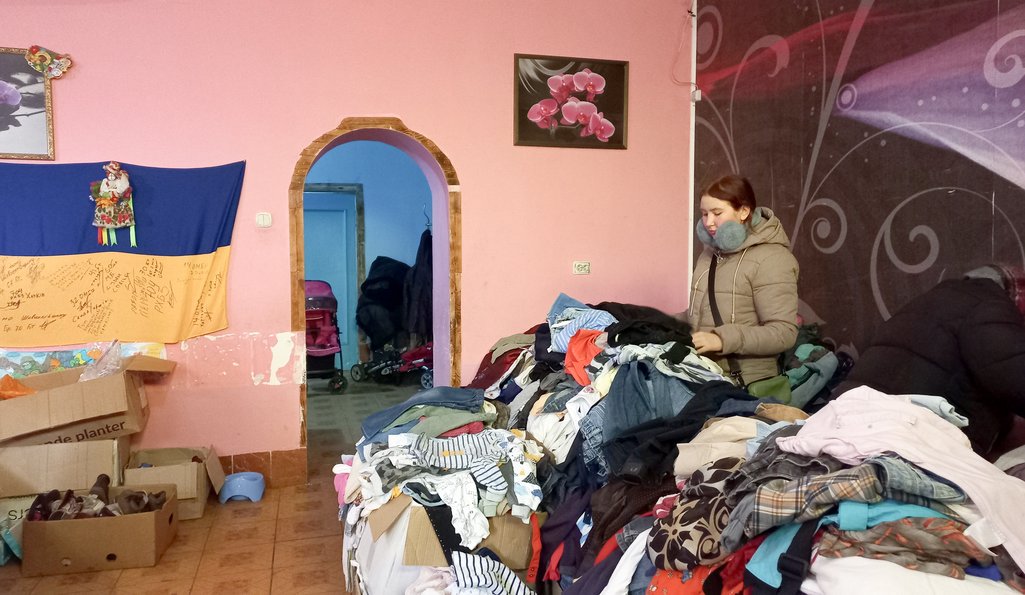
Woman sorts through donations at the Shevchenkove humanitarian centre
Kateryna Farbar
Tetyana Honcharova, 46, who has worked at the Shevchenkove cultural centre for more than 20 years, is a member of the Kupyansk District Council. She is also one of the most active members of the informal Shevchenkove humanitarian centre that was spontaneously formed once truckloads of humanitarian help started arriving from both Ukraine’s government and international partners.
Honcharova says many of the people who seek help at the humanitarian centre do not have money to buy food. The residents of Shevchenkove often have no wages, bake their own bread and can only afford milk. For everything else, such as sanitary pads, clothes, strollers and medicines, they count on the centre, which has ten permanent volunteers.
Female volunteers prepare food for the military and collect other items for them, such as small bags, a tablet computer for flying a drone, and warm clothes. Other volunteers who go to the front line will give them to the Ukrainian military, who are fighting in the direction of Kupyansk.
As we spoke with volunteer Tetyana Pchelnyk, 61, the old cafe – already piled high with clothes and boxes – filled with people. Pchelnyk, a teacher at an orphanage for children with disabilities, lives with her family in a zone constantly exposed to shelling.
“When I come here, I bake something for the boys [soldiers], and I feel so relieved. I feel like I’ve helped a little,” Pchelnyk said.
She lives with her daughter and son-in-law, and their eight-year-old son. Since the children were evacuated from the orphanage where she works, Pchelnyk has been on furlough and receives two thirds of her salary. The money is barely enough. But the tears in her eyes are not because of that: they are from the psychological stress of life near the front line.
“Before the war, we used to go to Kharkiv on weekends for a walk, but now we are psychologically tied to one place,” she said. “It’s very depressing. You are afraid that there will be no home when you return, and it is dangerous in Kharkiv.”
Lydia Shelyuh, 56, another volunteer at the humanitarian centre who works as a security guard at the local dormitory of the school, tears up as soon as she starts talking about life in the village, which often comes under fire.
“Children are afraid to stay at home alone,” she says.
Another difficulty for Shelyuh is the utility bills, especially for gas heating, that consume almost all of her small salary.
People like Pchelnyk, Shelyuh and Honcharova live very close to the war and feel they have a duty to help the Ukrainian military. They believe that their actions are hastening the day when there will be peace again in their community.
Shelyugh’s grandson, ten-year-old Danyil, saw his father narrowly escape detention by Russian soldiers during the occupation of Shevchenkove.
Daniyil loves football. Once, after returning from the west of Ukraine, where the situation is relatively peaceful, he got upset about the state of his own community.
“My grandson, when he came back, said: ‘Ba, there people live,’” Shelyuh remembers, and cries. “He is a small football player. He says he would like to play football there, to practise. And here there is nothing – everything is destroyed.”
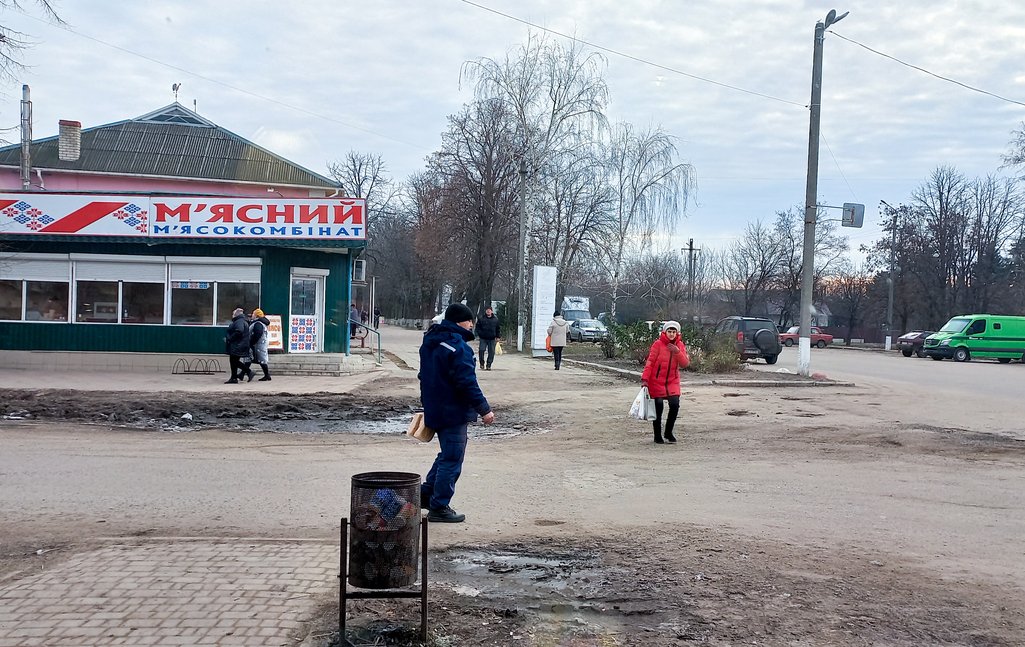
Shevchenkove often comes under fire
Kateryna Farbar
Not forgotten
The Savyntsi community was liberated in April 2022 and suffered less damage than other communities in the Kharkiv oblast. It is about 90 kilometres from the frontline and since September last year hasn’t experienced Russian shelling.
Oksana Suprun, the head of the Savyntsi military administration, says her number one priority is to return people to the community and for housing to be rebuilt. It is particularly hard to get private housing completed, she adds.
Before the war, Savyntsi had 10,200 inhabitants. Today it has around 7,000; since September last year, over 5,000 people have returned to their homes. The majority of the population are elderly, as younger locals of working age have left, says Suprun, despite the fact there are jobs available.
Suprun says she is looking for new ways of developing the community.
“We will now carry out a land inventory in order to understand our potential, and my goal is to attract investors, because we have mineral resources that would be interesting to investors in order to create new enterprises here,” she said.
Valentina Mazurik, 67, from Savyntsi, head of the local volunteer union Berehynia, has been involved in volunteer activities since 2014. Today, there are more than 80 elderly women in her union who weave camouflage nets for the military, prepare food for them, and collect necessities.
For the women of both Savyntsi and Shevchenko, activism, volunteering and helping the military are among the only ways to engage in activities outside the home, make human connections and feel useful to their communities.
Dvorichna, meanwhile, is under constant shelling. It has been largely evacuated, but 3,500 of the original 16,500 pre-war inhabitants remain, just kilometres from active fighting.
Halyna Turbaba, 64, the elected leader of the Dvorichna hromada since 2020, runs the local authority mostly from Kharkiv after she was injured in a Russian rocket attack against Dvorichna’s administrative building.
During the Russian occupation, Turbaba spent almost three months in Kupyansk’s district police station for refusing to cooperate with the invaders.
Turbaba is a short woman with a slight build, now unable to walk quickly. She has lost her home and many friends and relatives, but must continue at her post. While other communities have already been able to restore basic infrastructure and even sometimes received funding from international programmes to update it, other communities are only beginning to recover. Turbaba’s main concern is that her community is not left behind.
“We want to stay on the map so that we are not forgotten,” she said.
Read more
Get our weekly email
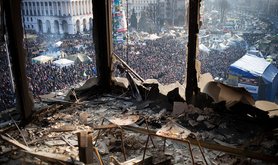
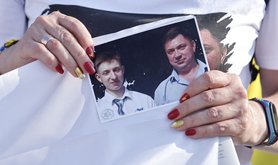

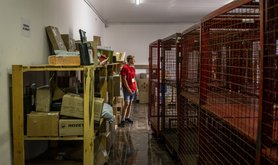
Comments
We encourage anyone to comment, please consult the oD commenting guidelines if you have any questions.